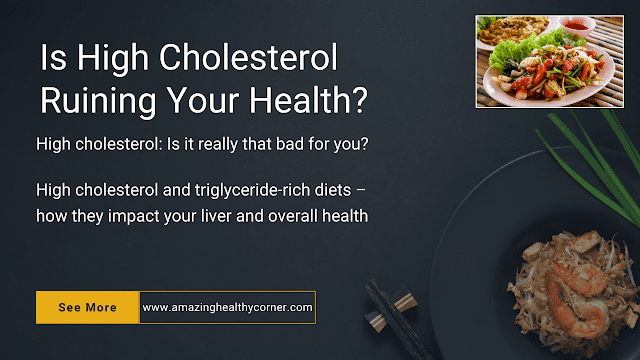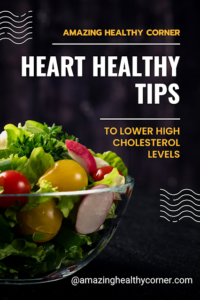High cholesterol: Is it really that bad for you?
If you have hyperlipidemia, also referred to as “high cholesterol,” your blood lipid levels are elevated. Fats and compounds that resemble fats are referred to as lipids. Triglycerides and cholesterol are the two lipid types that are most frequently present in this disease. Cholesterol is necessary for your body to function properly. Your liver produces the majority of the cholesterol you require. Your body’s cells require cholesterol for the cell membrane.
High cholesterol is necessary for vitamin D production!
Vitamin D is produced by your skin from cholesterol and sunlight. Cholesterol is a substance that certain glands utilise to create vital compounds known as hormones, including the testicles in males and the adrenal glands. Additionally, your liver needs cholesterol to create bile acids, which aid in the digestion of dietary fat. Triglycerides provide energy for your body. Your liver and meals both contribute to the triglycerides in your blood.
High cholesterol and triglyceride-rich diets – how they impact your liver and overall health
Triglyceride-rich diets include fatty foods, refined carbs, simple sugar-rich foods, and alcohol. Lipids released from your liver cannot pass through your bloodstream without modification. Your liver wraps specific proteins around the lipids to allow them to travel. A lipoprotein, the resulting new molecule, can travel throughout your bloodstream and your body to the cells that require it.
High cholesterol: The difference between LDL and VLDL
The classification of your cholesterol as “good” or “bad” depends on the type of lipoprotein it belongs to. The “bad” cholesterol, or LDL, is produced by your liver as very low-density lipoproteins, or VLDLs. These lipoproteins are loaded with triglycerides and cholesterol. Triglycerides are delivered to your cells by VLDL through the bloodstream, where they are used as an energy source by the cells.
High cholesterol: how your VLDL turns into LDL and causes body fat
If your liver produces more VLDL than your body requires for energy, the additional triglycerides are stored as body fat by the VLDL. A VLDL turns into an LDL, or low-density lipoprotein, after losing its triglycerides. LDL circulates through your blood, carrying cholesterol to the cells that require it. Your blood may become clogged with LDL if your body produces too much of it. Your blood vessel walls may develop a plaque buildup as a result of LDL accumulating there. The formation of plaques from LDL may be facilitated by damage to vessel walls. This accumulation over time might lead to blood vessel narrowing and decreased blood flow. LDL is known as the “bad” cholesterol because of this.
High cholesterol: The silent killer clogging your arteries
Coronary arteries, which are the blood vessels that supply your heart muscle, are a frequent location where this plaque can accumulate. Your chance of having a heart attack rises as a result of this buildup in the coronary arteries. The carotid arteries in your neck, which contain plaque, can restrict blood flow to your brain and raise your risk of stroke. High-density lipoprotein, or HDL, sometimes referred to as the “good” cholesterol, is also produced by your liver.
High cholesterol: The good, the bad, and the HDL
Compared to LDL, HDL has more protein and considerably less triglycerides and cholesterol. HDL aids in removing extra cholesterol from your blood vessel plaque and cells. HDL is referred to as the “good” cholesterol for this reason. The extra cholesterol is sent by HDL to your liver, which eliminates it from your body. The National Institutes of Health advises having a fasting lipoprotein profile blood test every five years if you are 20 years of age or older. It determines your levels of triglycerides, LDL, HDL, and total cholesterol.
9-12 Hours Without Food: The Timeframe for a High Cholesterol Test
After you haven’t eaten for nine to twelve hours, a blood sample will be obtained from your arm or finger during this test. Less than 200 milligrammes per deciliter should be the target for total cholesterol. An optimal HDL, or “good” cholesterol, level for most people should be 60 or higher. The optimal level of LDL, or “bad” cholesterol, is under 100. Additionally, fasting triglycerides need to be under 150.
Heart Healthy Tips to Lower High Cholesterol Levels
Your precise objectives may change based on your current state of health. What should your lipid objectives be? Ask your doctor. Eating a heart-healthy diet rich in lean protein sources, fruits, and vegetables is crucial if your cholesterol levels are too high. Your cholesterol level can also be affected by the types of fat you consume. Saturated and trans fats, for instance, might cause LDL cholesterol to increase. These fats, which are typically solid at room temperature, are present in meat, dairy, a variety of processed foods, and tropical oils including cocoa butter, coconut oil, and palm oil. Healthy fats that are often more liquid at room temperature are unsaturated fats, such as polyunsaturated and monounsaturated fats. Foods including fish, nuts, and vegetable oils contain them.
High cholesterol? Here are some lifestyle modifications to lower your cholesterol!
Avoiding smoking and engaging in regular exercise, such as brisk walking or jogging, are other lifestyle choices you may adopt to lower your cholesterol. Your doctor may recommend specific drugs to lower your cholesterol if lifestyle modifications are insufficient. Statins are medications that lower the amount of cholesterol your liver produces. More than HDL or triglyceride levels, they have an impact on LDL levels. Niacin raises HDL cholesterol produced in your liver and lowers LDL cholesterol and triglycerides.
How to Lower Your High Cholesterol Levels with Bile Acid Binding Resins
Bile acid binding resins are medications that stop bile from being used again after it has assisted in food digestion. As a result, less cholesterol is present in your bloodstream because your liver consumes more cholesterol to replace the lost bile. Fibrates can increase HDL levels and are typically used to lower triglyceride levels in blood.
Can Inhibitors of Cholesterol Absorption Lower High Cholesterol Levels?
Inhibitors of cholesterol absorption lessen the quantity of cholesterol your intestines absorb from the food you eat. In many situations, the same actions—eating a diet low in saturated fat, trans fat, and cholesterol, exercising frequently, controlling your weight, and giving up smoking—can help maintain good cholesterol and triglyceride levels.









